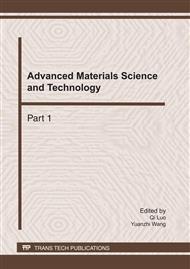p.623
p.629
p.636
p.642
p.647
p.651
p.656
p.661
p.667
Equidistant Five Wavenumbers Selection for NIR Spectroscopy Analysis of Glucose in Human Serum
Abstract:
Using Fourier transform near-infrared (FTNIR) transmission spectroscopy and multiple linear regression (MLR) method of the equidistant wavenumbers combination, the quantitative analysis models of human serum glucose were established, and discrete wavenumbers combination was optimized. The optimal models were found in the five equidistant wavenumbers combinations with 7 and 40 gaps.The center wavenumber of the optimal models with 40 gaps in the first overtone region and combination region were 7970 and 5880 cm-1 respectively, and the corresponding RMSEP were 0.371 and 0.389 mmol/L respectively. While the center wavenumber of the optimal models with 7 gaps in the combination region and first overtone region were 5795 and 8041 cm-1 respectively, and the corresponding RMSEP were 0.395 and 0.407 mmol/L respectively. The above four models had a good prediction effect, and could provide basis for designing minitype special NIR spectroscopy instrument.
Info:
Periodical:
Pages:
647-650
Citation:
Online since:
January 2011
Authors:
Price:
Сopyright:
© 2011 Trans Tech Publications Ltd. All Rights Reserved
Share:
Citation:


